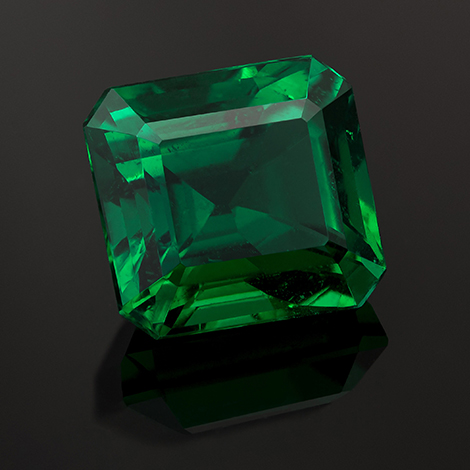Historically speaking, it hasn’t been unusual to confuse Colombian emeralds with the “old mine” emeralds associated with the Hindu Maharajahs. What are “old mine” emeralds and where exactly do they come from?
In the mid-1970s, Russian geologists discovered emeralds in the Panshir Valley of Afghanistan.
In neighboring Pakistan, another deposit—some thirty kilometers long, extending from Mingora to Bar Kotkai in the Swat Valley—was already known. French geologist and UN expert Pierre Carrel thought that the two made up a common emerald deposit. However, analyses of samples have shown that the Afghan site was in fact new.
After this discovery, old questions resurfaced about the origin of another group of emeralds—or “old mines”—that adorn certain Hindu treasures. We can think back to Theophrastus, who, in his 314 BC treatise on stones, was one of the first to wonder about them. “The emeralds which are used to decorate cups and other golden vessels come from Bactria to the desert; they [people] go there on horseback to look for them in the time of the summer winds or the annual east winds: they [the emeralds] are seen in those times because the sands are agitated with violence by these winds.”
Alexander the Great, for whom Theophrastus served as preceptor at the court of Macedonia, had ascended the valley of Panshir in 329 BC, traveling just a few miles from the mines. This trip could explain the presence of emeralds in Hindu treasures dating from as late as 1000 AD, confirming that they are Afghan in origin.
On the other hand, emeralds from Colombia, like those from Panshir, have three-phase inclusions and other similar characteristics, due to similar geological formation.
But the mines of Colombia were not yet known in 1000 AD. The Chivor deposit had been mined as early as 1545 by the Conquistadors, and as late as 1594 by Muzo, with the Mughal dynasty in control from 1526.
In 1998, Gaston Giuliani (CNRS research director) was able to definitively identify the Afghan origin of the old-mine emeralds, using oxygen isotope analysis. It would take another fifteen years or so before an analysis of a historical sample could confirm his scientific conclusion.
It is interesting to note, incidentally, that the highest price an old-mine emerald can fetch goes to a 10.11ct stone from Panshir: $ 225,000/ct at the end of 2015.

